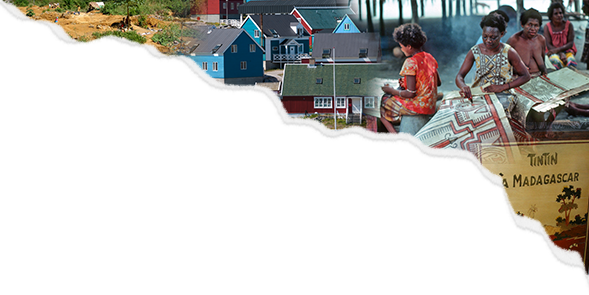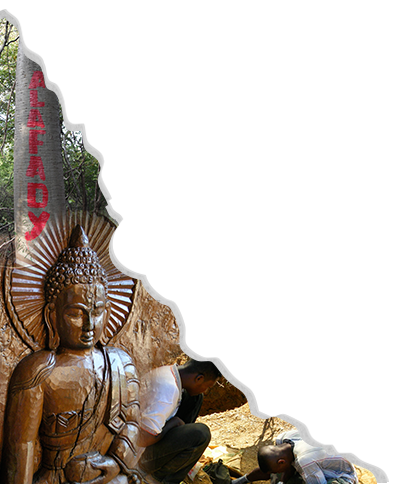In this contribution, Gloria Rudolf describes the beginnings of her long-term friendship with Esperanza Ruiz and the people of Loma Bonita in Panama. Nineteen visits and half a century later, Esperanza’s life history formed the basis of a compassionate ethnographic account of change in rural Panama.
For half a century I’ve been following the lives of the people of Loma Bonita, a small community of farmers and wage workers in the beautiful mountains of central Panama. I first arrived there in January, 1972, a young anthropologist eager to listen, observe, and participate in everyday life while I studied the workings of economic and political affairs.
 At that time, Loma Bonita was a community where people gathered water from streams, produced light with kerosene lanterns, and walked barefooted. I was a US city girl from a working-class background who had never climbed a mountain in her life. As you can imagine, those early weeks after my initial arrival were a nightmare of discomfort for me and the people in this community. As I’d approach a house to introduce myself, I’d often hear people scurrying through a back door to escape me. Our worlds were entirely unfamiliar, with no way to know how we each felt or thought. Then one day about six weeks after my arrival, Esperanza Ruiz, the woman in the house where I ate two meals a day invited me to accompany her, along with her mother and two brothers, on a two-day journey up the mountain to a community where they had a small coffee farm that needed their attention. Of course, I said yes, but with grave hesitation about traveling such a long distance on foot as they did. Esperanza suggested that I bring along the horse I’d just purchased for $40 from a neighbor, and promised they’d help me take care of this animal.
At that time, Loma Bonita was a community where people gathered water from streams, produced light with kerosene lanterns, and walked barefooted. I was a US city girl from a working-class background who had never climbed a mountain in her life. As you can imagine, those early weeks after my initial arrival were a nightmare of discomfort for me and the people in this community. As I’d approach a house to introduce myself, I’d often hear people scurrying through a back door to escape me. Our worlds were entirely unfamiliar, with no way to know how we each felt or thought. Then one day about six weeks after my arrival, Esperanza Ruiz, the woman in the house where I ate two meals a day invited me to accompany her, along with her mother and two brothers, on a two-day journey up the mountain to a community where they had a small coffee farm that needed their attention. Of course, I said yes, but with grave hesitation about traveling such a long distance on foot as they did. Esperanza suggested that I bring along the horse I’d just purchased for $40 from a neighbor, and promised they’d help me take care of this animal.
Off we went the next day after lunch, climbing without pause for about four hours, and arriving at the home of one of Esperanza’s distant relatives, just in time for warm greetings and a big pot of rice and beans. After dinner, we sat by the light of the lantern, telling stories. Esperanza, I noted, had a marvelous flair for drama, her hands making wide graceful circles as she talked, lower lip pointing here and there to show direction. That night we all slept on mats under a gorgeous star-packed sky.
By the time we left to check the coffee farm the next morning, I was more relaxed. With help from Esperanza and her brother, I climbed up into my horse’s saddle, feeling confident. Ten minutes into our journey, without warning, the horse turned his head and bit my left leg—right through my thick jeans. Blood gushed. I felt rage at the animal that would be responsible for my premature death, and started screaming at him—in English, of course. Then, like a madwoman, I somehow jumped down from the horse, and, yelling obscenities in English, picked up a branch and started to strike a blow on his side. That’s when Esperanza ran over and grabbed me. She guided me to a nearby rock to sit, trying to calm me down. Examining my wound, she pronounced me very much alive. Pointing up the mountain with her lower lip, she said “There’s a small store about 10 minutes away where we can get alcohol for your wound.” Through tears, I looked up and saw that she—and everyone, the whole family—was starting to laugh. That’s when it dawned on me how utterly ridiculous I must have looked. I started to laugh, too. “I’m done with horses.” I announced.
For the rest of that day, I limped along slowly, with Esperanza at my side and her brother mounted on my ex-horse. By dinnertime we had arrived back in Loma Bonita. Somehow news of the attack had preceded our return. As we passed by the first house on the road, a middle-aged woman named Emilia came running out of the house, shouting, laughing, and re-telling the story of the horse, and how I had tried to hit it back with a tree branch. Hilarity all around. In fact, all along the road in Loma Bonita people were coming out of their houses to greet us and retell the comical (to them) events of how the horse bite had made me cry, and, most importantly, gotten me so angry that I had jumped down and tried to attack it while cursing in English.
As it turned out, this event served as an initial icebreaker in my relationships with many community members. A well-told story holds great power because it can dive beneath the social surface and expose human emotions. I was still a stranger, but my tears, fears, and anger were recognizable feelings to everyone in Loma Bonita. They could empathize with me, could see something we had in common.
By the time I left Loma Bonita a year later, I, in turn, was hooked on all of their well-told life stories, and knew I’d have to come back. People had shared so many moving accounts about their lives that I cared deeply to know what would happen next for them. Keeping track of the ongoing experiences of Loma Bonita’s families and of the community’s unfolding history had become my passion as both anthropologist and fellow human being. And so, since my first departure from Loma Bonita at the end 1972, I’ve returned to the community to continue my studies 19 times, most recently in 2019.
It was with this idea of the power of a good story to capture and hold attention across social divides that I decided several years ago to try to bring storytelling into my ethnographic writing about Loma Bonita. I wanted the people of the community to come alive for readers in a way that standard anthropological accounts (including my own) often can’t reach. I wanted to try to touch hearts as well as minds so that readers could make connections between their own lives and those of others. The book I finally wrote, titled ‘Esperanza Speaks,’ aims as much as possible to describe the past century of changing times in this community through people’s life stories. At center stage is that great storyteller, Esperanza Ruiz, and four generations of her family, almost all of whom I’d personally known and admired during my half-century of study in Loma Bonita.
There are, of course, limits on what a life history of one woman and her family can reveal about the history of a whole community. How did the experiences of Esperanza and her family compare to those of other families in Loma Bonita? And, on a grander scale, how did Loma Bonita’s development compare to that of other poor rural communities in Panama and in Latin America? Finding a way to place the lives of Esperanza and her family into these wider contexts without diluting the storytelling power of their experiences was my great challenge in writing the book, and, in the end, made it more complex than I would have wished. But I do feel like I shined a beam of light on the ordinary people who make history, and in some way helped Esperanza speak her truth in public.
Dr. Gloria Rudolf is a research associate in the Department of Anthropology at the University of Pittsburgh. She is the author of Esperanza Speaks: Confronting a Century of Global Change in Rural Panama in the Teaching Culture series.




